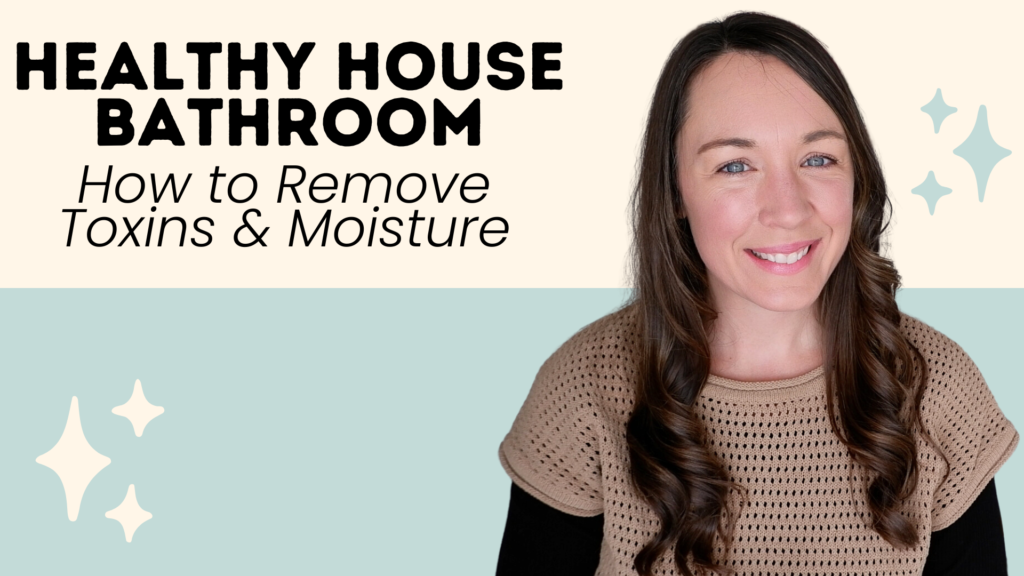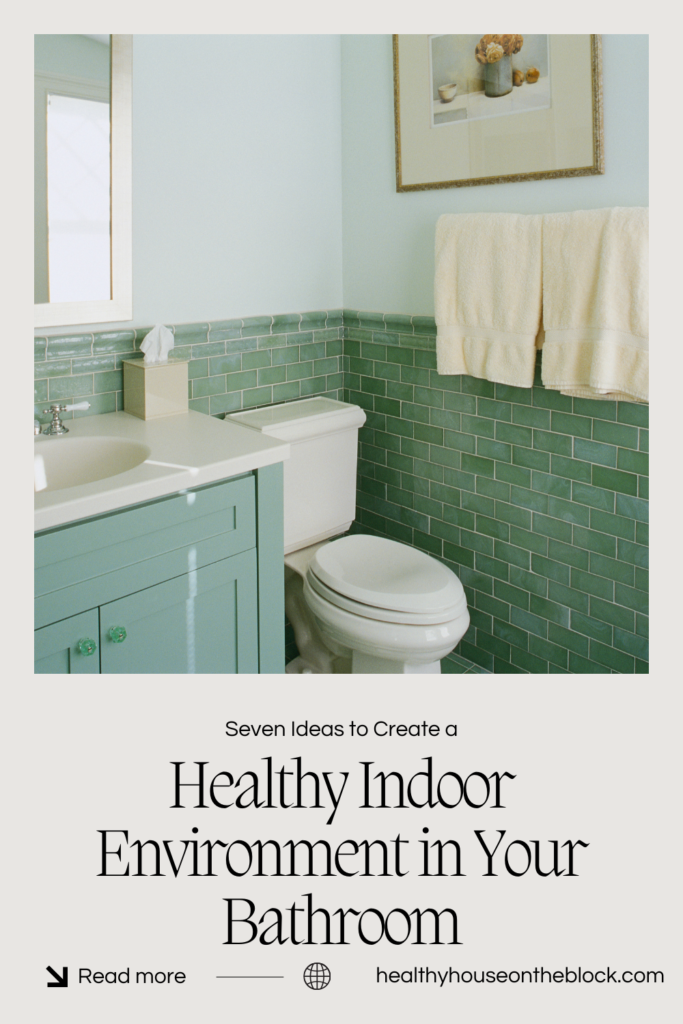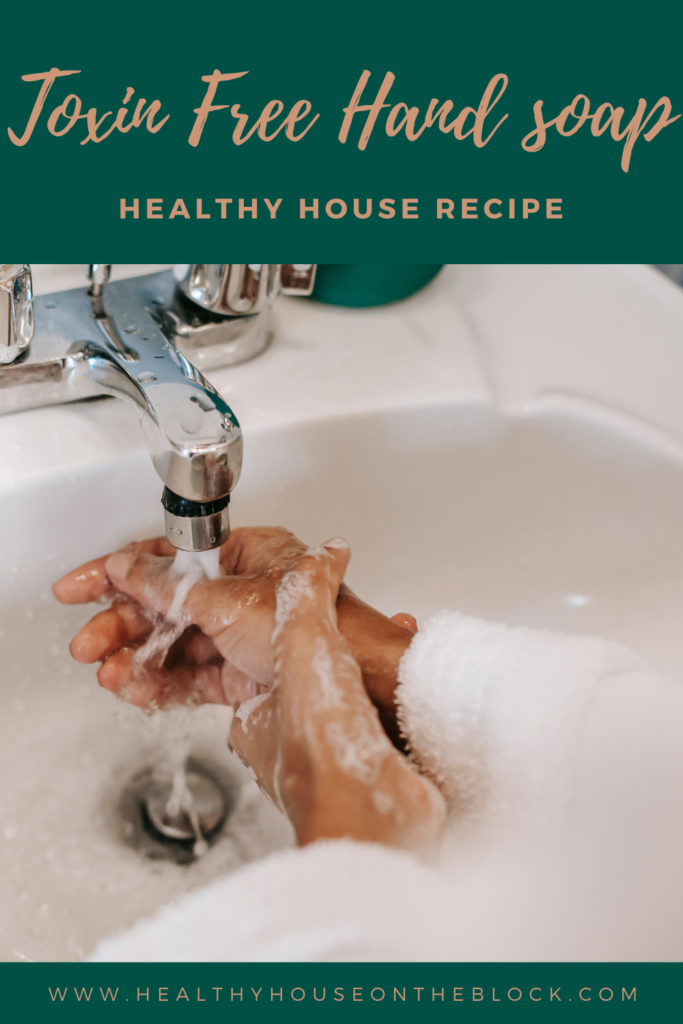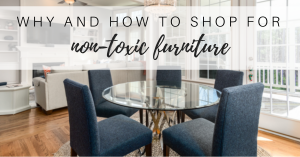
The bathroom might not be the first place you think of when trying to make your home healthier, but it’s actually a big player in your overall indoor air quality. Between humidity, cleaning products, and personal care items, it’s easy for this space to become a source of toxins and mold. But don’t worry—making some simple, realistic changes with these bathroom ideas can go a long way.
Here are some super doable steps to make your bathroom a healthier, happier space:
Swap Out Harsh Cleaning Products
Let’s be real—scrubbing the tub is bad enough without breathing in a cloud of chemicals. Many conventional cleaners are loaded with VOCs (volatile organic compounds) that pollute your indoor air. Look for plant-based, non-toxic options instead. Labels like EWG Verified, Green Seal, or ECOLOGO can guide you to safer choices. Bonus: these products are just as effective, so you’re not sacrificing clean for healthy. And I promise using this first of many bathroom ideas won’t break the bank either.
My top pick for bathroom cleaners:
Bathroom Ideas to Make Ventilation a Habit
One of the biggest culprits when it comes to bathrooms is the humidity and moisture that can become very high not only while someone is showering, but for quite sometime after the bathroom is done being used. It’s important to let the bathroom area completely dry out and the more quickly it dries out, the better it will be for the health of the indoor environment. If you’re lucky enough to have a window in your bathroom, use it if the weather is dryer outside.
During hot and humid times of the year, it may have the opposite effect to open the window to the outdoors. But if the air is dryer than inside the bathroom, crack it open while the bath or shower is running and leave it open for a bit afterwards too.
Second, use your bath fan if you have one. A vented fan is often times installed in bathrooms to pull moisture out of the air and expel it outside the house. A high quality fan that draws the moisture up and out of the room is best used during shower and bathing use and for twenty minutes afterward as well.
Some maintenance tips and bathroom ideas on vented fans:
- Clean fan grates off every so often to remove dust and debris build up. This will prolong the life of the fan.
- If you’ve never checked, peek into your attic space to ensure that the venting connection running from your bath fan to the exterior of your home is in tact. Moisture entering your attic space on a regular basis can turn into a huge problem (mold!).
- If you or someone you know is moderately handy, you can inexpensively install a timer switch for your bath fan that will keep the fan on for 20-30 minutes after a shower or bath to help remove moisture from the room.

Keep an Eye on Grout and Caulking
Grout and caulking are your bathroom’s first line of defense against water. When they crack or wear down, moisture sneaks in and invites mold to the party. Check these areas regularly, and if you see any damage, patch it up pronto. Trust me—it’s way easier than dealing with mold cleanup.
But make sure you don’t bring in toxic products when you’re working in your bathroom space either. These are my favorite toxin free grout and caulk solutions to keep in line with your healthy bathroom ideas:
Dry Towels and Rugs Completely
There’s a reason your mom always told you to hang up your towels. Wet, soggy rugs and towels are a breeding ground for bacteria and mold. They also can expel moisture into the air when left wet for a long period of time. Dry out towels by hanging them up immediately after use. If you can hang rugs over a bar or bathtub, you can help dry those out as well.
I recommend washing towels and rugs 1-2 times a week in the washing machine. You can put baking soda in the soap compartment and vinegar in the softener compartment and wash on the hottest setting. This will help remove product build-up and reside from the towel fibers without adding harsh chemicals. Finally dry them on the hottest setting to ensure they are completely dried out.
Protect Wooden Surfaces
Many bathrooms have wood trim and wood cabinets. It’s important to keep this wood sealed with a non-toxic varnish to protect it from the wet areas of the bathroom. When wood is exposed it absorbs all the moisture from around the bathroom and can hold onto the moisture for a long time.
It’s important to seal that wood so that mold and mildew doesn’t begin to grow and also to protect the integrity of the wood.
If you do notice a spot that has faded and the sealant has come off, you can sand it down, stain it with a non-toxic stain if desired and then seal it with a safe varnish.
These are a few of my favorite non toxic options to keep in line with these healthy bathroom ideas:
Get Rid of Plastic and Vinyl Shower Curtains
Plastic shower curtains are a big health concern when it comes to the environment indoors. These curtains are made from the softest plastic, which contains the highest amount of plasticizers and PVC. Have you ever smelled the strong odor of a brand new shower curtain? That’s the smell of chemicals and plastic toxins. These toxins continue to off gas into your bathroom and your home for the life of the product. And what we know about off gassing is that the higher the humidity and temperature, the more toxins are expelled.
For this reason it’s best to opt for a different solution that is toxin free, but that also keeps water inside the tub or shower. Looking for a curtain that can repel water is your best bet. Some of the best options I’ve seen are:
- Hemp: It’s naturally resistant to mildew and bacteria which can make it one of the best options for a liner
- Linen: You’ll want a heavyweight fabric to ensure the water is repelled and kept off the floor.
- Cotton: These can be great as you can wash them when you need to. Again, a heavyweight option is best to help repel the water and keep it in the shower or tub.
- Beeswax Coating: This can be an additional way to repel water, but definitely involves work on your end as you’ll have to reapply it from time to time.
Here are my favorite Shower Curtain picks:
Switch Out Your Hand Soap

This is often forgotten about in the bathroom as we just buy whatever is on sale or whatever we’ve always used. But hand soaps are filled with chemicals and synthetic fragrances that seep into our skin and care carried to the bloodstream. This is one of the easiest ways to remove toxins from your bathroom and one of the BEST ways to protect your body from toxins.
A few alternatives that I use in my own home are:
- Homemade mix of ½ cup castile soap and ½ cup water. If you want to add a little moisture, you can add 1 tbsp of vitamin E oil (jojoba or sweet almond oil work too). You can create a naturally disinfecting soap by adding 15-20 drops of tea tree essential oil and 10 drops or so of lavender essential oil.
- You can create a foaming hand soap (which is easier for my kids to use) by purchasing foaming hand soap dispensers and using the recipe above but changing the ratio to ⅓ cup castile soap and ⅔ cup water and leaving out the vitamin E oil.
More Bathroom Ideas to a Healthy Bathroom Environment
Share this:
- Click to share on Facebook (Opens in new window) Facebook
- Click to share on LinkedIn (Opens in new window) LinkedIn
- Click to share on Reddit (Opens in new window) Reddit
- Click to share on Pinterest (Opens in new window) Pinterest
- Click to print (Opens in new window) Print
- Click to share on X (Opens in new window) X





Pingback: House Plants That Will Actually Make Your Home Healthier - Healthy House on the Block